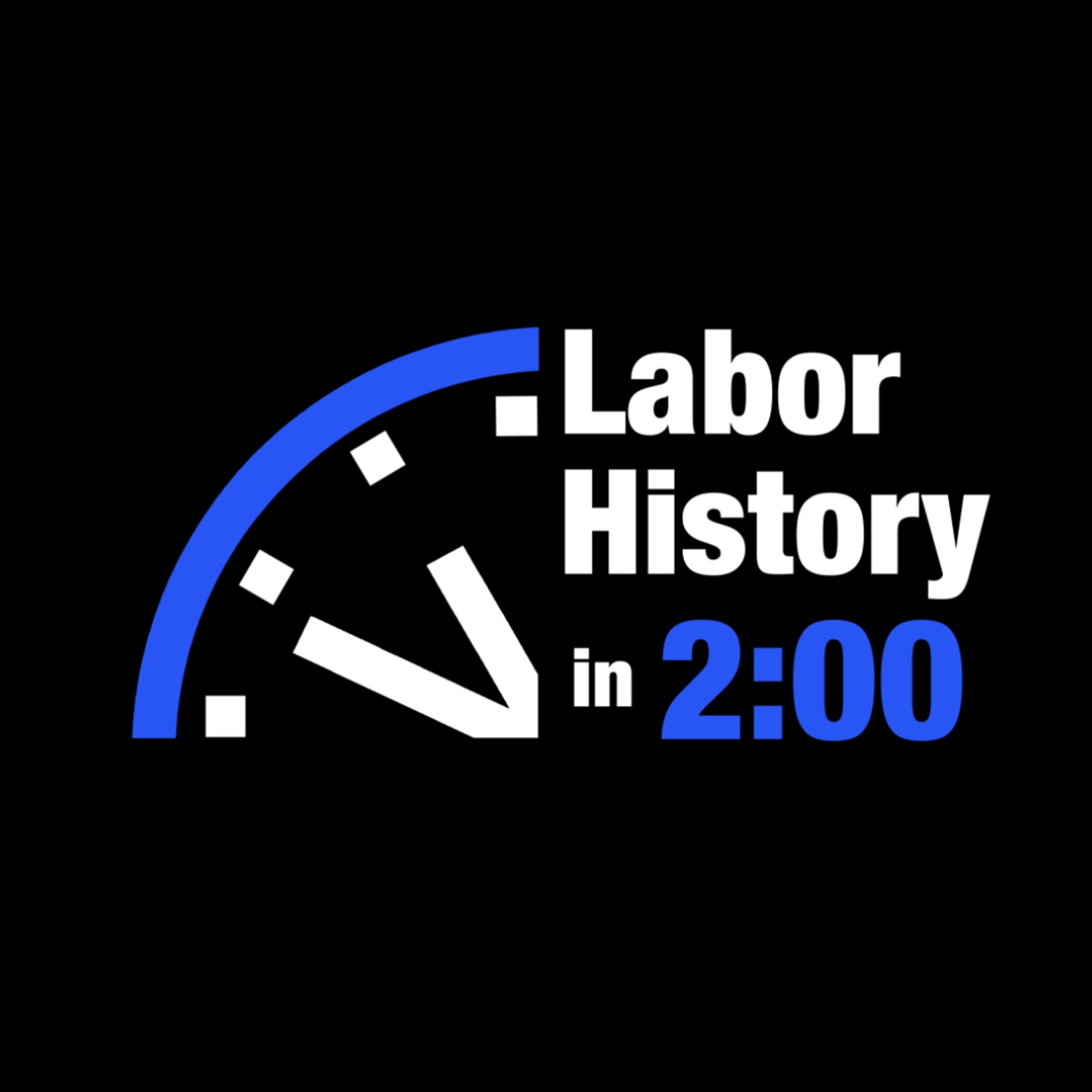Episodes
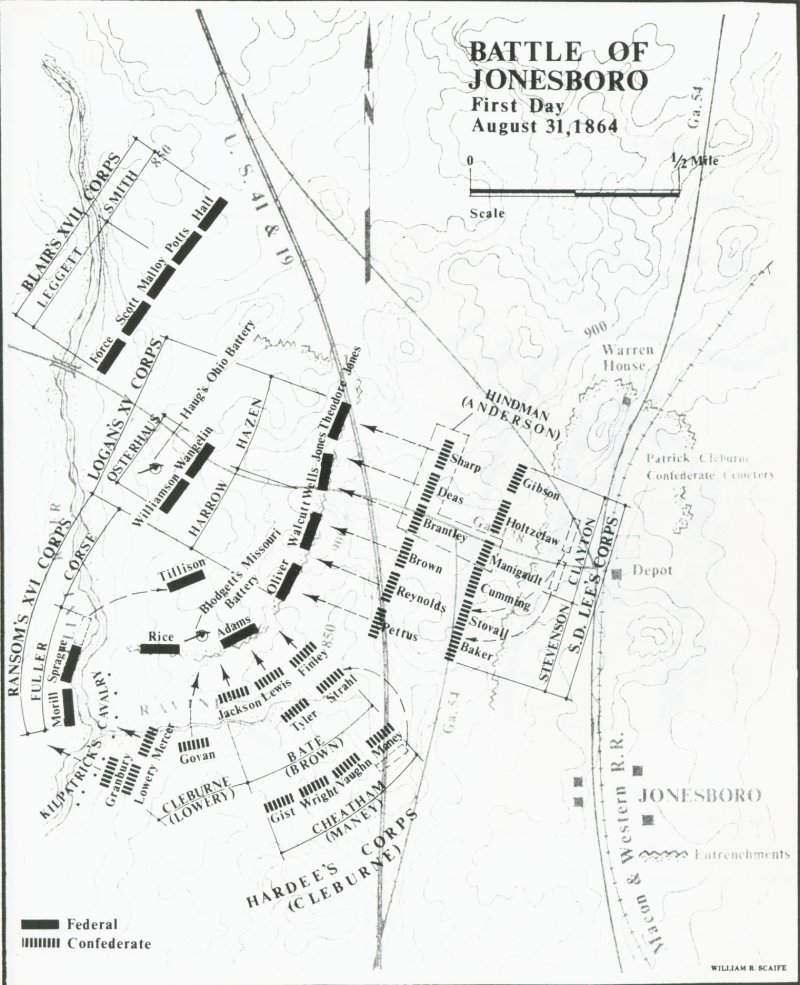
Thursday Aug 31, 2017
August 31 Final Battle of the Atlanta Campaign
Thursday Aug 31, 2017
Thursday Aug 31, 2017
On this day in labor history, the year was 1864.
That was the day the final battle of the Atlanta Campaign began with the Battle of Jonesborough.
The Union had been embroiled in a civil war with Confederate forces to end the slave labor system for three and a half years.
It had been a difficult summer.
Battles were increasingly bloody, with casualties on both sides numbering in the tens of thousands.
Criticisms intensified against key Union generals like Sherman and Grant.
Pressure mounted against President Lincoln to end the war and withdraw the Emancipation Proclamation if necessary.
General William T. Sherman mounted the Atlanta Campaign earlier that year, in May.
His forces scored a number of victories throughout the summer, but could not decisively defeat Confederate forces.
By August, Northern morale was so low that the Republican National Committee deemed Lincoln unelectable.
The Democratic National Convention, convening in Chicago, had declared the war a failure and planned to ride to victory over Lincoln in the November elections.
But Lincoln’s commitment to emancipation was unwavering.
And Sherman did not disappoint.
He understood that Atlanta was, as historian Eric Foner describes it, “a key railroad hub and the communications and transportation center for the entire Southeast.”
Sherman’s forces had been marching down from Chattanooga for most of the summer.
Finally, they marched to the south of Atlanta to cut the last key rail line.
On this day, Union forces positioned themselves at the Flint River and at the Macon and Western Railroad.
Over the next two days, they would successfully beat back multiple Confederate assaults, destroy the rail line and force Confederate forces to abandon Atlanta.
The city was now fully under Union occupation.
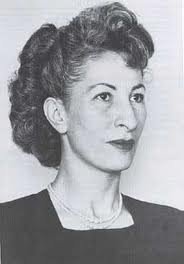
Wednesday Aug 30, 2017
August 30 Luisa Moreno Born
Wednesday Aug 30, 2017
Wednesday Aug 30, 2017
On this day in labor history, the year was 1907.
That was the day labor leader Luisa Moreno was born in Guatemala City.
As a young woman, she fought for the admission of women into Guatemalan universities.
After attending journalism school in Mexico City, Luisa moved to New York with her husband and worked as a seamstress.
Outraged by low pay, racial discrimination and poor working conditions, she led organizing efforts on the job.
During the Depression she worked as a full-time union organizer, first with the AFL organizing black and Latina cigar rollers in Florida.
But she also became active with the Communist Party and joined CIO efforts to organize cannery workers.
Luisa led unionizing efforts of pecan shelling women workers in San Antonio, Texas and then of cannery workers in Los Angeles.
In 1938, Luisa helped organize the Spanish-speaking Peoples Congress.
During World War II, she fought against discrimination in hiring of Mexicans in oil and war-related industries.
In the 1940s she became centrally involved in high profile legal defense cases of Mexican-American youth prosecuted on frame-up charges.
These included work around the 1942 Sleepy Lagoon case and then of victims of the Zoot Suit riots a year later.
She continued union work in California, helping to organize and represent walnut pickers.
By 1950 she was caught in the cross hairs of the McCarthy-era witch-hunts.
Luisa was targeted by Operation Wetback, and offered citizenship status in return for testimony against radical labor leader, Harry Bridges.
When she refused, she faced deportation on the accusation that she had once been a member of the Communist Party.
She returned to Guatemala and continued organizing workers throughout Central America.
Luisa Moreno died in Guatemala in 1992.
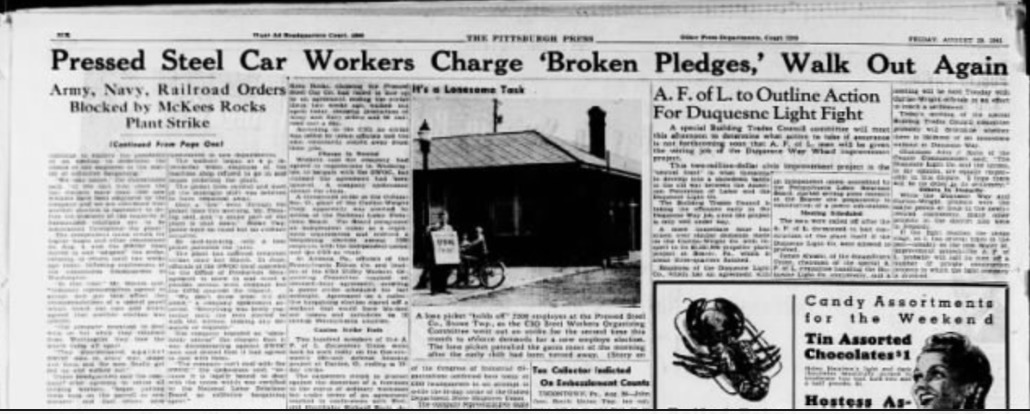
Tuesday Aug 29, 2017
August 29 Steelworkers Strike
Tuesday Aug 29, 2017
Tuesday Aug 29, 2017
On this day in labor history, the year was 1941.
That was the day 2500 steel workers at the Pressed Steel Car Company near McKees Rocks, Pennsylvania walked off the job.
It was the second walkout in two weeks.
Workers effectively shut down production of armor plate for the Navy, shell forgings for the Army and railroad cars used to transport military materiel.
The company had gone back on promises of holding a collective bargaining election.
Steelworkers Organizing Committee sub-regional director, Abe Martin told The Pittsburgh Press that while the union had not called the strike, workers had “walked out themselves because they are fed up with the company’s discrimination against them.”
SWOC had been trying to organize the plant for years.
But the company had engineered an election for a so-called, independent union 18 months earlier, when the complex was only operating at half capacity.
Workers walked out at the beginning of the month and ended their strike on the guarantee that negotiations for a new election would begin.
But when they returned, they found that some were stripped of seniority while others were forcibly transferred to new departments.
The day before, machine shop workers on the afternoon shift were fed up and dropped their tools.
Word spread throughout the evening and by early morning, picket lines were solid and production had come to a complete standstill.
When the company tried to force reopening of the plant after Labor Day, 1500 workers formed picket lines at the gates to stop scabbing.
They returned to work 10 days later in compliance with a request by the National Defense Mediation Board.
The NLRB rejected SWOC’s election petition two months later, but SWOC persisted and won exclusive bargaining rights the following June.
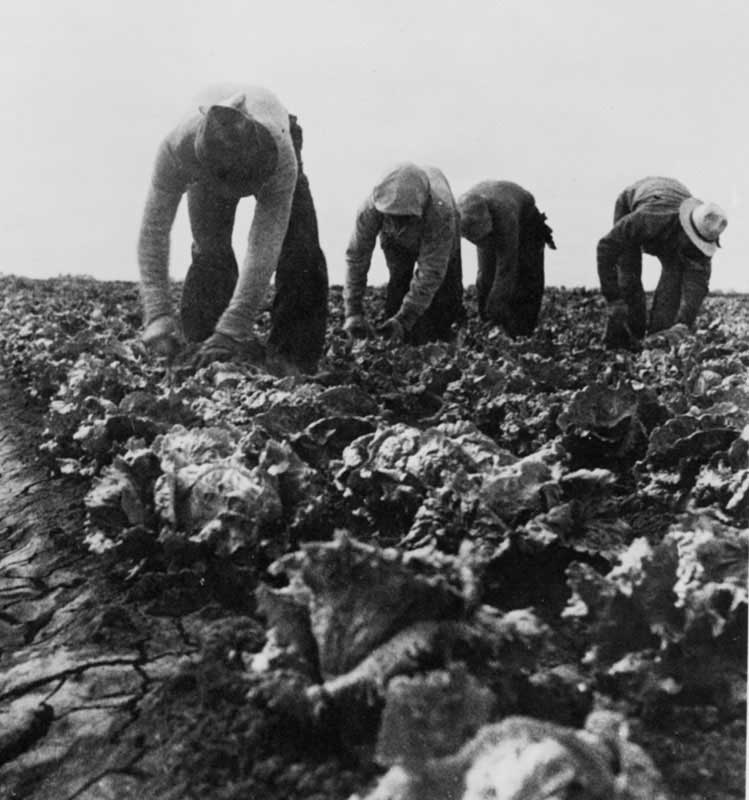
Monday Aug 28, 2017
August 28 Filipino Lettuce Workers Strike
Monday Aug 28, 2017
Monday Aug 28, 2017
On this day in labor history, the year was 1934.
That was the day 7,000 white and Filipino lettuce workers in California’s Salinas Valley walked out on strike.
Salinas was the lettuce capital of the world.
The division of labor in the Valley was largely ethnically based.
Filipinos did much of the field labor, while whites worked in the packing sheds.
At the time, Filipinos made up 40% of the total agricultural workforce in the Salinas Valley.
They had founded the Filipino Labor Union a year earlier.
White packing shed workers had organized into the AFL’s Vegetable Packers Association.
While the VPA had been reluctant to work with the FLU, they now sought to join forces in strike action.
Both unions agreed neither would return to work until both had achieved victory.
Together, they demanded wage increases, union recognition and better working conditions.
Losing $100,000 a day, the growers soon imported scabs of all races.
They enlisted California Highway Patrols to arrest striking Filipinos on incitement and vagrancy charges.
Soon the VPA agreed to arbitration, leaving the FLU to continue the strike alone.
Some speculated the members were threatened with the loss of their charter if they refused to return to work.
The striking Filipino workers continued to organize job actions and experienced increased retaliation as a result.
VPA leaders publicly distanced themselves from the Filipino strikers and racially charged vigilante violence intensified.
It culminated in the burning down of the labor camp where hundreds of Filipino workers lived a month after the strike began.
Vigilantes then drove as many as 800 Filipinos from the Valley at gunpoint.
The strike was officially called off and those that remained returned to work.
By October, both unions had won wage increases.

Sunday Aug 13, 2017
August 13 Miner's Rise up Against Convict Lease Scheme
Sunday Aug 13, 2017
Sunday Aug 13, 2017
On this day in labor history, the year was 1892.
That was the day miners in Tracy City, Tennessee rebelled against the state’s convict lease system.
Miners had been forced to work side by side with convict labor.
The convicts, overwhelmingly African-American, were forced to live in deplorable stockade conditions.
Their presence in the mines served to minimize paid labor, keep wages low and stunt union organizing throughout the state.
Miners demanded that Tennessee Coal, Iron and Railroad give them the same hours of work as the convicts.
When they refused, the miners marched on the stockades where convicts were housed.
They released the convicts and marched them onto trains bound for Nashville, burning the stockades to the ground.
The revolt at Tracy City followed armed uprisings of thousands of miners the previous year in nearby Briceville and Coal Creek.
Here it is thought that Knights of Labor leaders led miners to surround stockades, disarm guards, and release convicts onto Knoxville bound trains over the course of several days.
By August 1892, hundreds of miners would confront state forces in armed shootouts across Grundy, Marion and Anderson counties, releasing convicts when they could onto trains bound for Nashville.
Miners were eventually arrested and convicted.
But these revolts would lead the Tennessee General Assembly to end its convict lease system four years later, making it one of the first Southern states to do so.
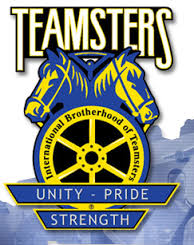
Saturday Aug 12, 2017
August 12 Teamster Organizer Kidnapped and Beaten
Saturday Aug 12, 2017
Saturday Aug 12, 2017
On this day in labor history, the year was 1955.
That was the day Teamsters organizer, 28-year old William Grami was kidnapped and beaten.
Grami had arrived in Sebastopol, California to help organize about 350 workers in local canneries, drying plants and fruit sheds.
The Teamsters had been on campaign footing for months, in an attempt to win union recognition, higher wages and benefits.
They had lost a union representation election the previous fall, after Sebastapol Apple Growers moved quickly to lay off union supporters.
By January, cannery workers at Oscar Hall and Sons voted for union representation, though workers at Barlow Company would vote against the union just two months later.
But by early August, the strike wave hit.
Workers walked off the job at the Sebastopol Cooperative Cannery.
More at seven other area canneries joined them on strike in the days that followed.
Grami would later testify that he had heard reports weeks earlier of a grower threatening to have him killed within three hours, should any strike actually take place.
During the strike that would ultimately prove victorious, three men kidnapped Grami outside the union hall.
He was driven along a rural road, tied to a pole, gagged and beaten with a bicycle chain.
Left for dead, he was found the next day and hospitalized immediately.
But the union and the strikers remained undeterred.
Before the strike was over, scab trucks attempting to haul apples to market were vandalized or burned, and scab drivers were beaten.
Eight months later, the apple industry finally came to the negotiating table.
By May 1956, area apple growers signed with the Teamsters.

Friday Aug 11, 2017
August 11 International Longshoremen’s and Warehousemen’s Union founded
Friday Aug 11, 2017
Friday Aug 11, 2017
On this day in labor history, the year was 1937.
That was the day the International Longshoremen’s and Warehousemen’s Union was founded.
After the victorious strike of 1934 that established the union hiring hall,
West Coast union leaders embarked on an inland campaign to organize the thousands of warehouse workers who handled shipped goods.
But West Coast dockworkers overwhelmingly chose to join the CIO after it was expelled from the AFL earlier that year.
They found the ILA planned to abandon the warehouse workers they had worked so hard to organize.
They also opposed dues assessments to fight the CIO and disagreed with the ILA’s hostility to minimum wage laws, social security and unemployment insurance.
Radicals like Harry Bridges and others had established themselves not only as workers leaders but also led attacks on Jim Crow racism in the ranks and in the industry.
The success of the 1934 strike was due in part to the welcoming of blacks into the ranks of the union.
In his Workers on the Waterfront, historian Bruce Nelson notes that, “the ILWU’s well-known opposition to racial discrimination was an important factor in the union’s expansion into Hawaii, not only on the waterfront but among sugar and pineapple plantation workers. The triumph of the ILWU in Hawaiian agriculture brought about a degree of fraternization across racial lines that few had thought possible.”
Since then, the union has beat back numerous Taft–Hartley and McCarthy era attacks.
More recently, the ILWU has been in the forefront of broader social justice struggles, leading walkouts and work stoppages for various political causes.
Today it represents close to 60,000 workers, including those locals that initially refused to affiliate.

Thursday Aug 10, 2017
August 10 Four Railroad Brotherhoods walk off the job in IL
Thursday Aug 10, 2017
Thursday Aug 10, 2017
On this day in labor history, the year was 1922.
That was the day 1300 workers from the four railroad brotherhoods walked off the job in Joliet, near Chicago.
The walkout threatened to paralyze freight service for steel mills in nearby Gary and other regional industries.
Four hundred thousand railroad shopmen had been on strike across the country for nearly seven weeks.
Newspaper headlines that day warned a general strike of two million trainmen loomed on the horizon.
Brotherhood leaders promised sympathy strikes in response to threats made against their members by troops on duty at railroad centers and yards.
There were also real concerns about the health and safety of trainmen, given rolling stock was no longer being maintained.
In Joliet, workers stayed away under threats from troops.
Additionally, Illinois Central trainmen faced threats from striking miners throughout Kentucky and Illinois, who warned:
“Stop transporting non-union coal or suffer the consequences.”
Resentment had been building against state guard troops stationed in Illinois yards.
Earlier in the week, striking shopmen had engaged in a fatal confrontation with Joliet sheriffs that left a striker and railroad detective dead and scores injured.
Riot orders were called when authorities sought to arrest striking shopmen who had stormed the home of a scab.
Brotherhood workers refused to return to work unless troops were removed.
Warren Stone, president of the Brotherhood of Locomotive Engineers stated: “We are not going to have our men shot up or beaten up or threatened by armed guards at railroad shops and yards.
When the men cannot go to work without having irresponsible armed guards endangering their lives, they may go home and stay there.
There will be 100 more cases soon if conditions are not changed.”
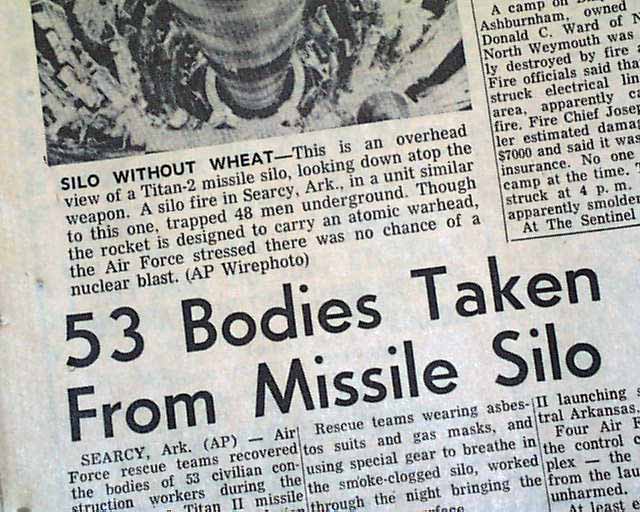
Wednesday Aug 09, 2017
August 9 53 Workers Killed in Explosion
Wednesday Aug 09, 2017
Wednesday Aug 09, 2017
On this day in labor history, the year was 1965.
That was the day fifty-three construction tradesmen were killed in a fire at the Titan II ICBM launch complex near Searcy, Arkansas.
It is considered one of the worst industrial accidents at a U.S. nuclear weapons facility.
The complex was one of four sites containing Titan II missiles.
Each missile weighed 340,000 pounds, measuring 103 feet in length and 10 feet in diameter.
President Johnson had just committed more troops to the Vietnam War.
The Air Force hoped to strengthen the silo against a possible Soviet attack.
They had contracted with Peter Kiewit and Son of Colorado to bring in electricians, carpenters, millwrights, painters and pipefitters for a number of tasks.
Crews worked to shore up the silo, improve the blast doors, adjust hydraulics and install emergency lighting.
52 of 55 workers on all nine levels of the silo were almost immediately asphyxiated when it suddenly filled with smoke and heat.
The Air Force determined a welder on level 2 accidentally pierced a high-pressure hydraulic line, igniting the fire.
Investigators also concluded the silo lacked adequate ventilation, alternative exits and independent power sources.
The contractor was held responsible for numerous safety violations, contributing to unsafe working conditions.
The welder was found drowned in hydraulic fluid.
Two survivors suffered burns and smoke inhalation.
They contested the Air Force’s findings.
One worker insisted no one had been welding on level 2.
The other survivor stated he saw flames burst from the diesel engine just before the power went out.
Both men insisted the fire started from below.
By 1981, two more deadly accidents involving Titan II missiles would prompt President Reagan to order their deactivation.
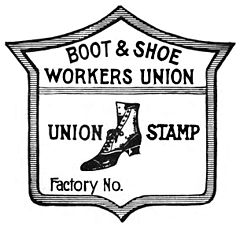
Tuesday Aug 08, 2017
August 8 First Black Labor Leader Elected in MN
Tuesday Aug 08, 2017
Tuesday Aug 08, 2017
On this day in labor history, the year was 1902.
That was the day more than 100 trade union delegates representing thousands of working people in St. Paul, Minnesota elected Charles James to be the president of the city’s Trades and Labor Assembly.
Virtually forgotten by history, James is considered to be the first African American elected to a city labor council anywhere in America.
He was born in 1866 in St. Paul and began working as a leather cutter for local shoe manufacturers at age 15.
This was at a time when most African Americans were excluded from skilled trades.
His biographer, Dave Riehle, asserts that it is unclear when James became involved in union politics and organizing.
Shoe making was the largest mass production industry in St. Paul, employing thousands.
Riehle notes the Knights of Labor had been active in the city during the 1880s and shoe workers were among the first to organize.
By 1899, James had become the first president of a newly formed shoe workers union in Minneapolis and helped to found three more locals in St. Paul.
By 1902, James was well known and well respected throughout the Twin Cities as a strong union leader.
He served three terms as president of the Trades Assembly and then as secretary for seven more years.
Riehle states that James continued as full time organizer and district business agent, traveling to cities across the Midwest to organize shoe workers.
When he died in 1923, the Boot and Shoe Workers Union eulogized him in their national journal.
Though James had been obscured from local labor history for decades, Riehle and others have worked to write Charles James back into the history books.

